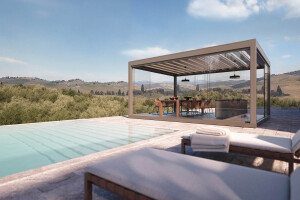The chapters of Pier 17’s history comprise a story of maritime activity, revitalization, hard times, and natural disasters. In 2018, a completely new Pier 17 opened. This chapter adds good times and a flurry of pedestrian activity to Pier 17’s story.
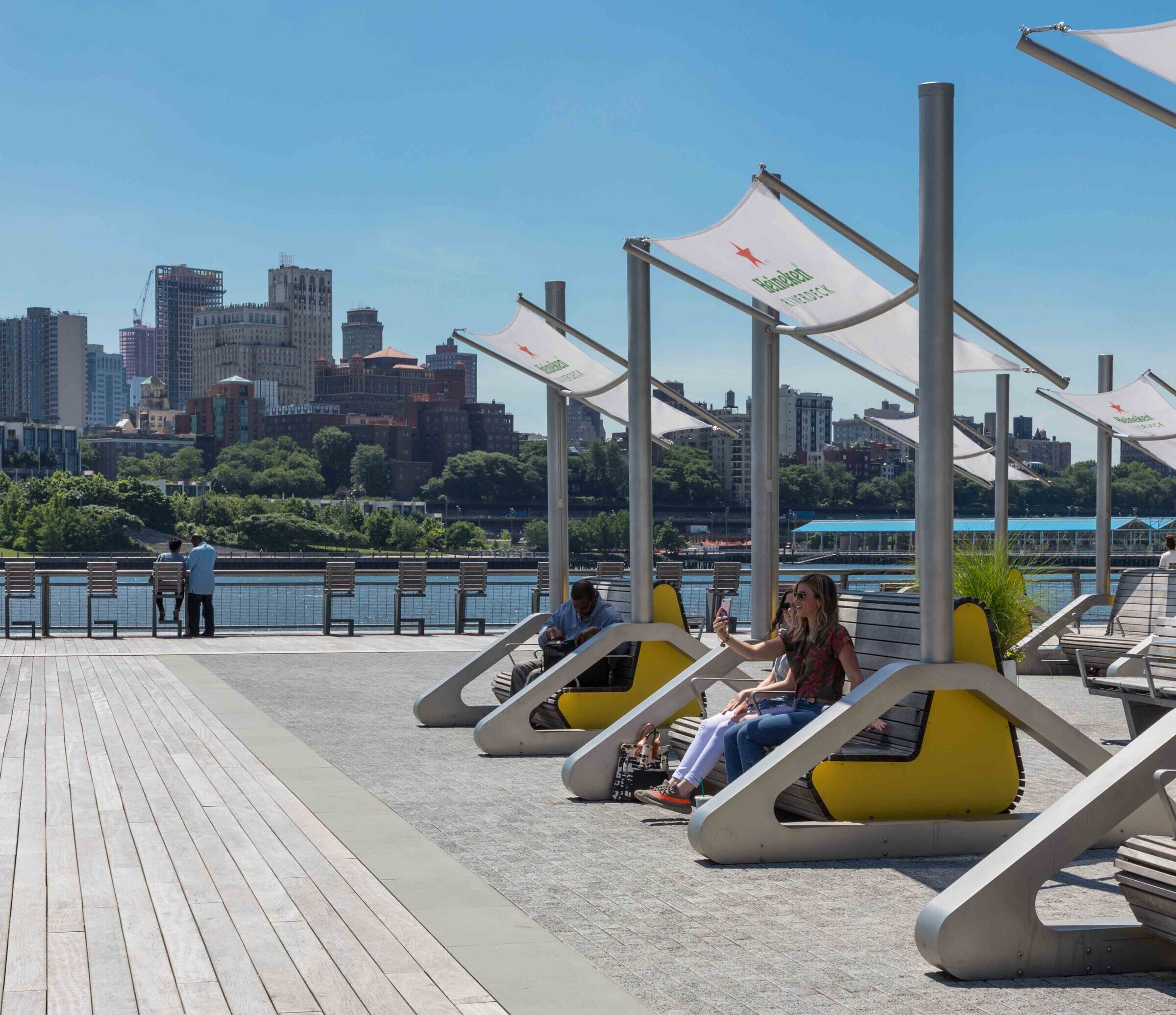
SHoP Architects, the NYC-based firm that had been involved in development of the pier for over a decade, was finally able to realize its vision of a lively space that celebrates Pier 17’s unmatched views of some of the city’s most iconic landmarks, including the Brooklyn Bridge, Lower Manhattan, and the Statue of Liberty.
Stephen Andenmatten, senior associate with SHoP Architects, recalls the firm’s involvement during a rough stretch of years. “Our initial work on the pier ended when the 2008 recession hit, and the project went into limbo.” In 2010, developer Howard Hughes Corporation engaged SHoP Architects to continue renovation of the pier. But when Hurricane Sandy hit in 2012, the project once again was stalled. In 2013, construction began on a heavily damaged pier. “The idea was to salvage the original pier, which had been built in the 1980s. But we discovered it couldn’t be salvaged, so we started over from the pilings up.” Pier 17’s 265,000 square feet is a mix of public and private, indoor and outdoor, open and enclosed spaces. Commercial tenants include ESPN, Nike, and a mix of restaurants and retail spaces.
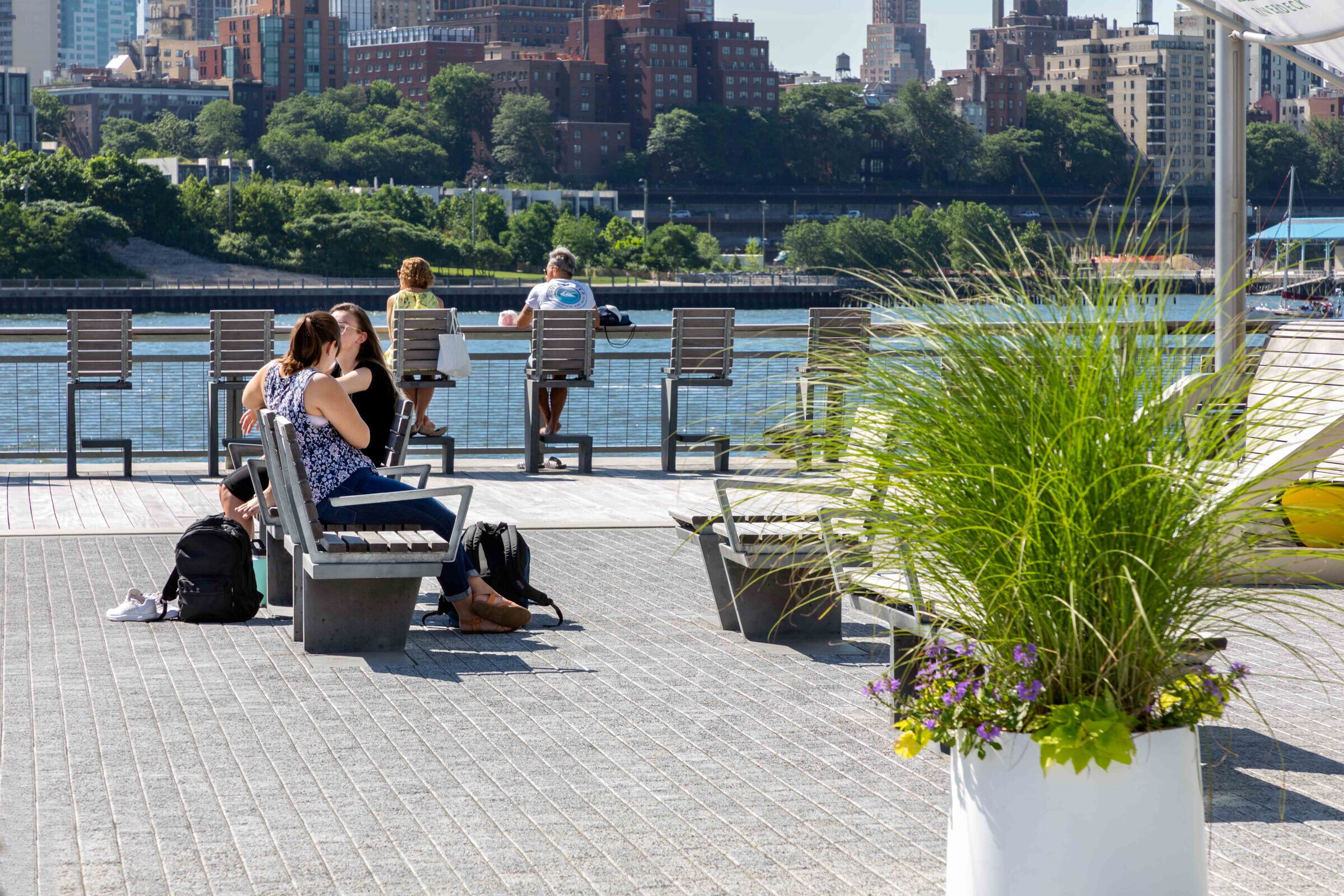
SHoP Architects’ Scot Teti, along with assistance from Associate Principal Angelica Baccon, managed the complex project, coordinating with a number of consultants and stakeholders, from the City of New York and Landmarks Commission to landscape architect James Corner Field Operations (JCFO) and Landscape Forms’ Studio 431, which created custom site furnishings.
“With the East River location, we wanted to connect the pier and its maritime culture,” says Teti. “We took cues from historical references. Pier structures were designed originally with doors that opened easily to move cargo from ship to building. We designed eight large sliding glass doors on the north and south sides of the new building that can be opened to take advantage of the views and the outdoor decks.” The original pier structure was a large monolithic building, essentially an indoor mall. SHoP Architects’ design extends the city’s street grid to the pier, “to make people feel like they’re connected with the city,” says Andenmatten. The ground level cluster of smaller buildings with concourses between them create a streetscape.
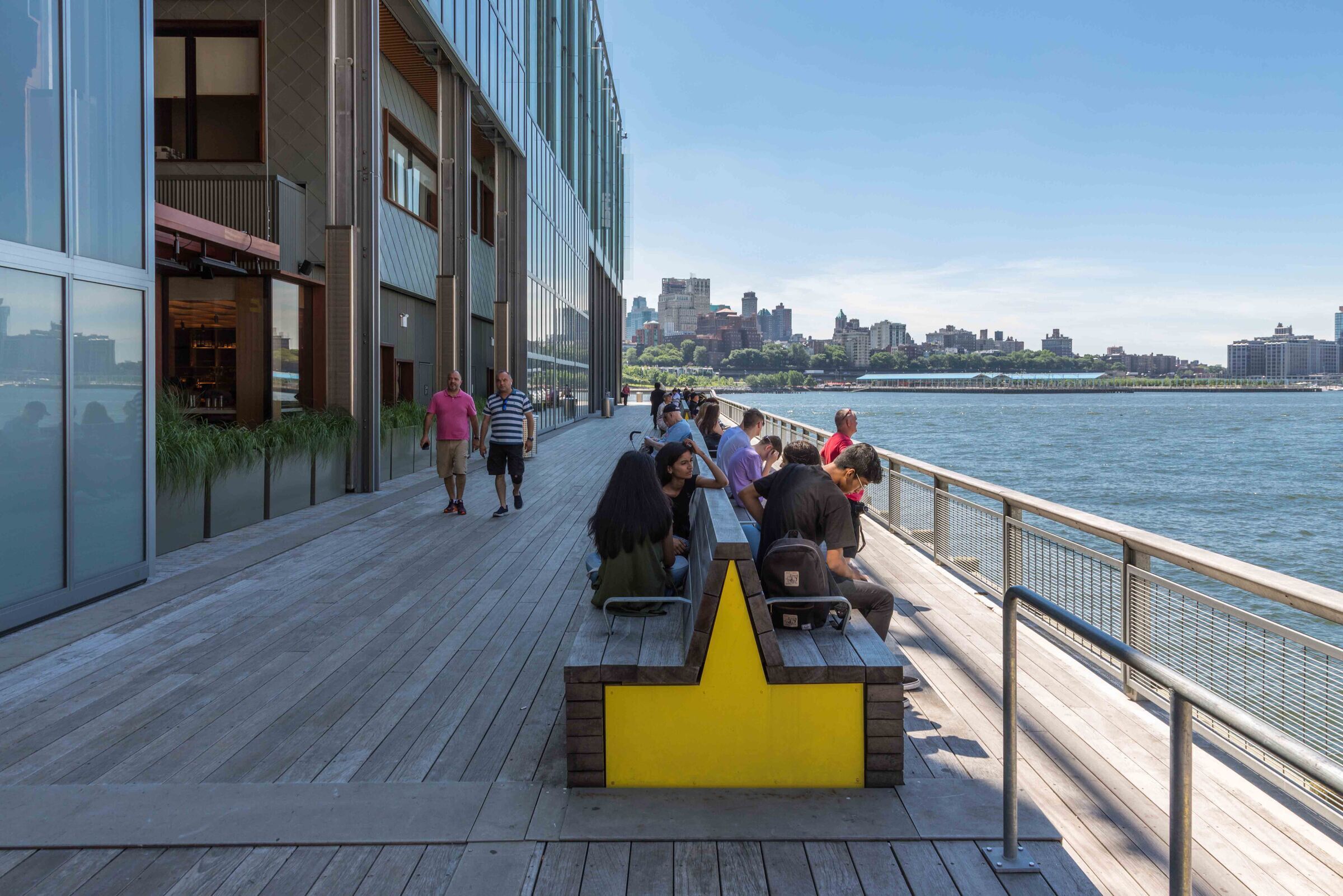
Outdoor decks are designed for pedestrian activity. JCFO’s landscape and furniture design goal was to give New Yorkers and tourists plenty of places to sit and take in the city and the East River. A 1.5-acre roof is home to an event space and more stunning views.
“The arrangement of the benches looks random, but it encourages people to strike social positions, to sit face-to-face rather than in a row,” says JCFO’s Tsutomu Bessho. Nine different bench styles on the ground and roof decks give people plenty of options. Benches are sized for individuals all the way to long expanses of benches, with and without arms and backs. Freestanding lounges and 16 gliders round out the custom furnishings. The decks and outdoor furnishings say “slow down, sit here, and relax a bit. New York City is all hustle and bustle, but the pier slows things down,” says Studio 431’s Mark Haase.

Gliders were a first for Studio 431 and one of the more complex products the custom group has engineered and manufactured. “We were challenged by JCFO to come up with a glider that had a smooth and pleasant motion, a completely concealed mechanism, and was able to withstand a lot of use over time,” says Studio 431 Technical Project Engineer Jim Hargrove. “Interactive CAD models helped us track the motion to make sure it was straight and balanced, not rocking,” continues Hargrove. Adding to the technical difficulty was the glider’s impressive size. The gliders are 12-feet high, 10-wide from pole to pole, eight feet from front to back, and 600 pounds each.
“The furniture on the pier level needed to withstand hurricanes, flooding, and not float away,” says SHoP’s Andenmatten. “At same time, we liked the idea of movable furniture. The gliders are stationary but have a kinetic motion. They invite human activity. We wanted to create something playful. That’s the spirit and motivation behind the gliders.”

“The canopies on the tops of the gliders are an expression of a sail,” says Bessho, “Their movement is reminiscent of the movement of water.”
The material palette used on the pier and in the furniture is part of the East River Development’s master plan, which SHoP Architects has been involved in. Benches are made of untreated jatoba, a dense Brazilian hardwood, with galvanized steel frames. Benches sit atop precast ultra-high-performance concrete (created by another manufacturer). “We wanted the furniture to not only survive a flood, but also to be viable and useful after the flood,” says Teti. “Ultra high-performance concrete gives us strong but sculptural thin profiles, and their blue pigments tie into the waterfront palette.”

Bright yellow pops of color on the ends of the gliders and many benches add a “moment of contrast from the consistency of the long runs of wood,” says Andenmatten, “and complement the blue/gray palette. Bessho adds that the dashes of yellow catch the eyes of people crossing Brooklyn Bridge or coming to the pier from the city. “The color signals something is here, a destination to come to.”
Since it opened in June 2018, the pier has come to life with people working, relaxing, dining, going to concerts at the roof performance space, and ice staking in the winter. The North Porch, where many of the gliders and benches are located, is “shady most of the time, pleasant in height of the summer, with protected and comfortable views of the Brooklyn Bridge,” says Teti.

“We had no idea what the final mix of tenants was going to be,” says Andenmatten. “The majority of the village boxes (the small buildings separated by concourses) are restaurants. The higher floors have mostly become office space. We’ve found the restaurants and workplaces to be nice, unexpected additions; they are bringing people to the pier. Office workers eat lunch and meet outdoors. Restaurant goers spill out to the pier. Pier 17 is activating a previously dormant part of the city. There is once again a reason to visit the Seaport.”

“Studio 431 spoke our language - the designer language - and helped to bridge the gap between what can be constructed and still be true to our design intentions,” says Teti. “They were conscious of everything we cared about and delivered on it.”
Studio 431 Engineering Group Leader John Shimer is satisfied with the results Pier 17 project. “The scale of the project, the range and quantity of furniture, and the technical complexities of the gliders were the things that made the success of this project so rewarding.” And Shimer also loves that the custom furnishings are seen by audiences around the country. “When ESPN breaks before and after commercials, the cameras often pan out to the decks and our furniture. That’s a lot of fun to see.”
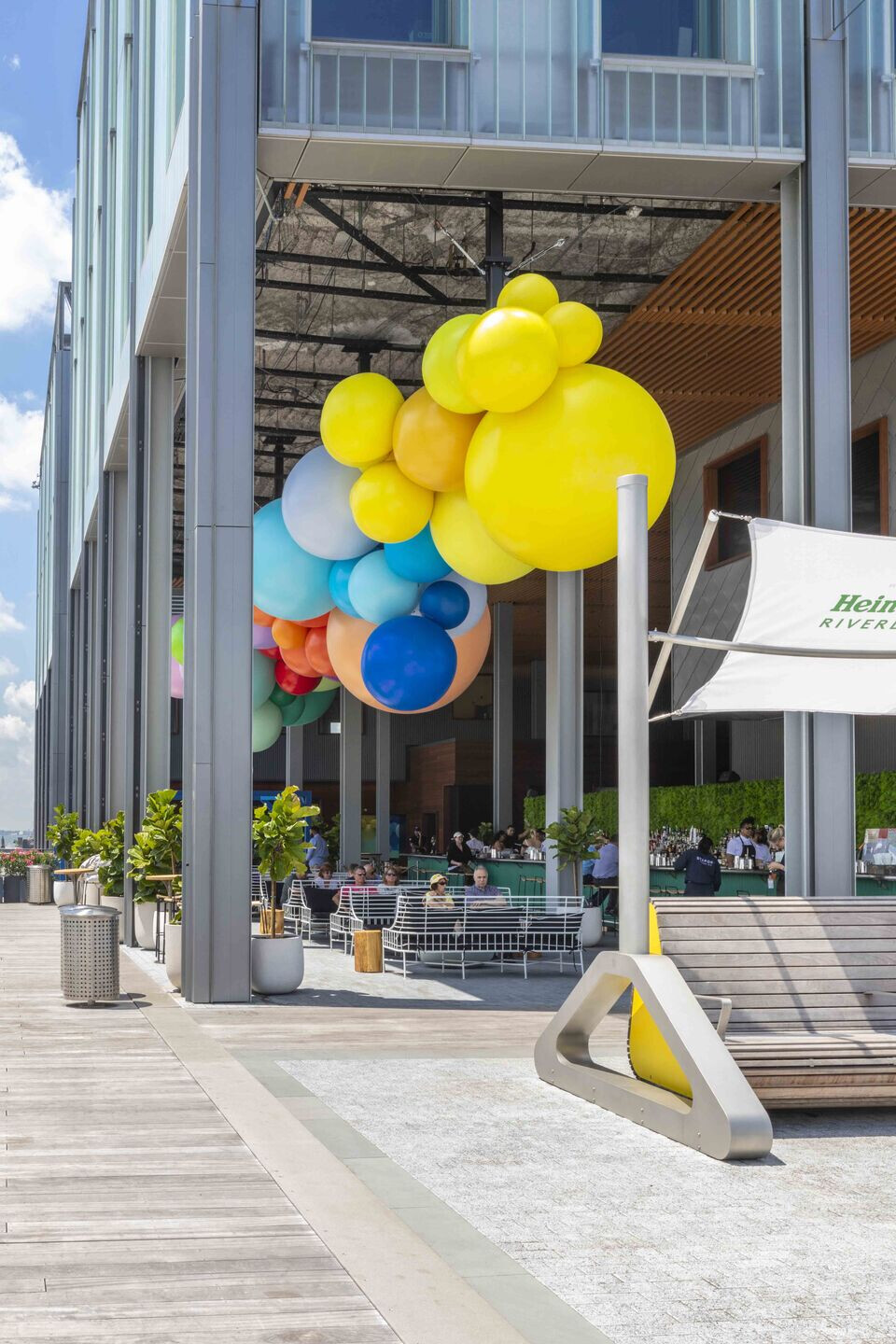
Custom Gliders, Custom Benches, Custom Seating Elements



























